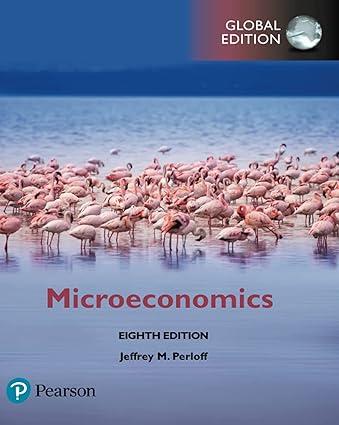The demand function for lamb in Australia (see Question 1.1) is (Q_{d}=63-11 p+7 p_{b}+3 p_{c}+2 Y), and
Question:
The demand function for lamb in Australia (see Question 1.1) is \(Q_{d}=63-11 p+7 p_{b}+3 p_{c}+2 Y\), and the supply function (see Question 2.1) is \(Q_{s}=149+8 p-9 p_{s}\). Solve for the equilibrium price and quantity in terms of the price of beef, \(p_{b}=19\), the price of chicken, \(p_{c}=6\), the price of sheep, \(p_{s}=5\), and annual per capita income, \(Y=78\). All prices are in Australian dollars per kg, quantities in million \(\mathrm{kg}\), and income in thousands of Australian dollars.
Data From Question 1.1:-
Suppose that the demand function for lamb in Australia is Q = 63 - 11p + 7pb + 3pc + 2Y, where Q is the quantity in million kilograms (kg) of lamb per year, p is the dollar price per kg (all prices cited are in Australian dollars), pb is the price of beef per kg, pc is the price of chicken per kg, and Y is annual per capita income in thousands of Australian dollars. What is the demand curve if we hold pb, pc, and Y at their typical values during the period studied: pb = 19, pc = 6, and Y = 78?
Data From Question 2.1:-
Suppose that the supply function for lamb in Australia is Q = 149 + 8p - 9ps, where Q is the quantity in millions of kg of lamb per year, and p and ps are the prices of lamb and sheep, respectively, in Australian dollars per kg. How does the supply curve change if the price of sheep increases from AU$5 to AU$5.50 per kg?
Step by Step Answer:






